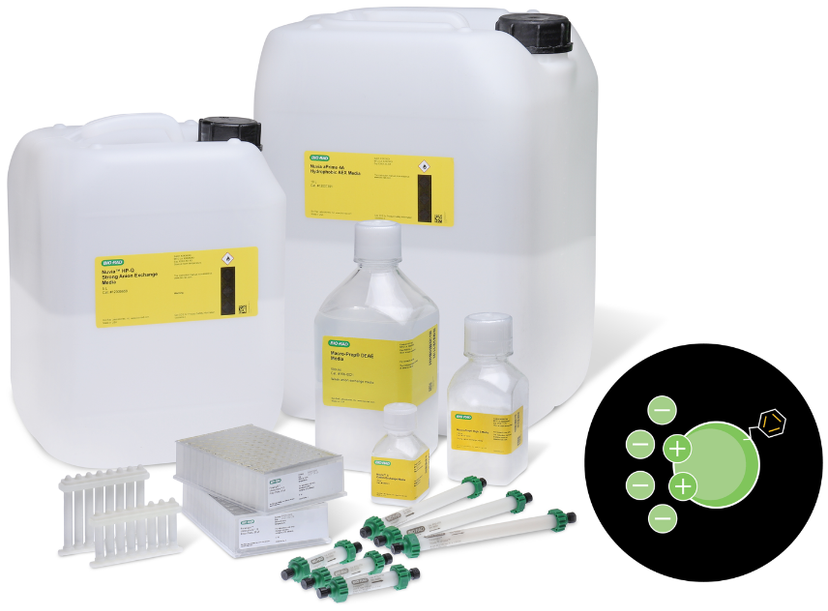Bio-Rad launches Nuvia wPrime 2A Media for biomolecule purification
Unlock small to large scale purification using weak anion exchange and hydrophobic interaction (AEX-HIC) mixed-mode chromatography resin innovation
16 Jan 2025Bio-Rad Laboratories, Inc. has announced the launch of Nuvia wPrime 2A Media, an AEX-HIC mixed-mode resin. Partners of Bio-Rad collaborated in the resin’s development and were successfully able to remove host cell proteins, high and low molecular weight aggregates and impurities, and DNA from monoclonal and bispecific antibodies, and adeno-associated virus.

Nuvia wPrime 2A Media, an AEX-HIC mixed-mode resin.
Built upon Bio-Rad’s Nuvia bead technology, Nuvia wPrime 2A Media features a polyacrylamide (acrylamide polymer) base bead that can be used for laboratory- and small-scale purification workflows, as well as for pilot-scale bioproduction and manufacturing-scale downstream processing.
Bio-Rad’s Nuvia resins are designed to have minimal non-specific binding reactions, due to the hydrophilic nature of the bead polymer, and maintain a constant dynamic binding capacity over a wide range of flow rates. The Nuvia bead allows for fast mass transfer, is chemically and mechanically stable over a wide range of conditions and is easy to pack.
Developed in collaboration with Bio-Rad’s partners in industrial biotherapeutic production, Nuvia wPrime 2A Media provides a wide purification design space. The charge state of the resin’s functional ligand can be modulated by the pH of the buffer, enabling the purification of otherwise difficult-to-separate biomolecules from other impurities.
Diab Elmashni, Director, Process Chromatography Business at Bio-Rad Laboratories, commented, “As a leader in multimodal chromatography technology, Bio-Rad’s Nuvia and CHT™ Ceramic Hydroxyapatite families of resins and media are integral to pharmaceutical development and industrial-scale purification for many customers worldwide This new resin is unique to the market and addresses customer requests for a scalable, weak anion exchange and hydrophobic interaction mixed-mode resin.”
Want more of the latest science news straight to your inbox? Become a member of SelectScience for free today>>
